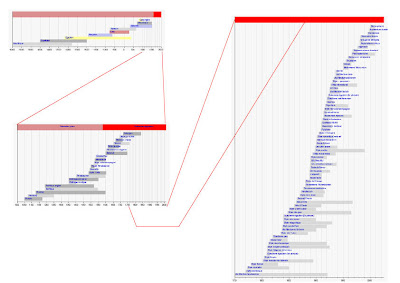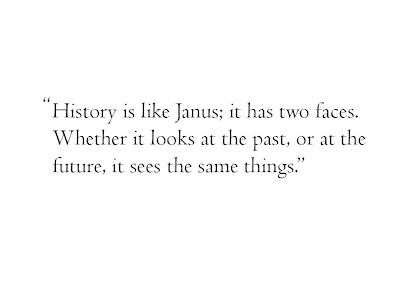A visit to the V&A Medieval rooms left me with a profound sense of futility. Not unlike Marie Antoniette’s private faux village in Versailles, it goes about overdoing the simplest of things by such a gargantuan margin it almost seems grotesque.
What can only be summed up as a quantity surveyor’s wet dream goes on to acquire an air of a Dubai developer’s showroom. Undoubtedly, the artworks presented are breathtaking; however with the pedestals being near‐priceless themselves, it is hard to focus on what is being exhibited. Not to be outdone by the centuries‐old filigree bits and pieces, the rooms’ centrepiece is a ludicrously gorgeous staircase ‐ complete with metal handles glued to structural glass walls.
The exhibition hopelessly lacks any sort of spirit ‐ the (almost soulless, yet notionally infallible) presentation completely overpowers the (now seemingly insignificant) exquisite artworks. Unfortunately what the visitor is left with is a parade of marvellous pieces – hopelessly entombed.
The most genuinely interesting objects were the scaffolding and cases still being prepared. They cried out as a dying man amid a barren (yet blindingly sparkly) landscape.
PS: Perhaps I am not seeing the picture properly. It may be in itself a monumental legacy of a time now past, as the invested £31.7 million were raised well before the current financial mishap...
16 March 2010
9 March 2010
Celebration week
Torej... na faxu imamo Celebration week, ki je hkrati dan odprtih vrat in hkrati korekture od gostujocih modrecev (in modric).. Poleg nekih drugih funkcij sem tudi imel za pripraviti nekaj poljubnega na temo studijskega programa do sedaj.
Tararararamtatidam:
I would like to share with you an epiphany that I’ve experienced during the course. Unlike the one Homer Simpson experienced, it doesn’t involve saving a town from some evil force. It can, however, be illustrated by quote of Fernand Braudel:”All history must be mobilized if one would understand the present.”
In a similar way ideas and motifs have been handed down through time. Along the way they were undoubtedly enriched (and occasionally adjusted), but made it to our hands all the same. Their development can be tracked through the gentle traces they have left along their way. If explored closely enough they can be picked out and contrasted with their predecessors and successors. Together they eventually formed layers upon layers of fragments, and hardly in any place more so than London.
While exploring them through the course, I have started seeing these reference points as lighthouses and began sailing gently amongst them. Each expedition proved more fruitful than the last, uncovering numerous curiosities and hidden gems.
And yet it was not the individual adventures that took my breath away, exciting as they were. Instead, I was overwhelmed when I suddenly realised I had circumnavigated the ocean and that all the wonders I had encountered along the way are inherently of the same, all-encompassing and un-escapable. That it was, indeed, one single interconnected and continuous story from Neolithic caves to Parametric design.
What I had comprehended is that there is no such thing as history, or future for that matter. Because, if I borrow another quote, “History is like Janus; it has two faces. Whether it looks at the past, or at the future, it sees the same things.” We are all, for better or worse, a part of the present. And that present has been going on for quite some time now.
Tararararamtatidam:
I would like to share with you an epiphany that I’ve experienced during the course. Unlike the one Homer Simpson experienced, it doesn’t involve saving a town from some evil force. It can, however, be illustrated by quote of Fernand Braudel:”All history must be mobilized if one would understand the present.”
Today we live in a fairly complex world of meanings and designations; incorporeal ideas that dictate what we do and where we go. An email reminded us all of this event, a simplified tube map guided our way here and now we are communicating through a designated set of sounds and gestures.
In that we have become detached from a great deal of the actual world that we live in. We tend to ignore the age of the rock that makes up the concrete holding the room up and the fact that a wooden table did indeed first have to grow up in a forest somewhere. And that it was an acorn before that. And that it most likely formed some part or another of some dinosaur at some point in time. And yet it is all here.In a similar way ideas and motifs have been handed down through time. Along the way they were undoubtedly enriched (and occasionally adjusted), but made it to our hands all the same. Their development can be tracked through the gentle traces they have left along their way. If explored closely enough they can be picked out and contrasted with their predecessors and successors. Together they eventually formed layers upon layers of fragments, and hardly in any place more so than London.
While exploring them through the course, I have started seeing these reference points as lighthouses and began sailing gently amongst them. Each expedition proved more fruitful than the last, uncovering numerous curiosities and hidden gems.
And yet it was not the individual adventures that took my breath away, exciting as they were. Instead, I was overwhelmed when I suddenly realised I had circumnavigated the ocean and that all the wonders I had encountered along the way are inherently of the same, all-encompassing and un-escapable. That it was, indeed, one single interconnected and continuous story from Neolithic caves to Parametric design.
What I had comprehended is that there is no such thing as history, or future for that matter. Because, if I borrow another quote, “History is like Janus; it has two faces. Whether it looks at the past, or at the future, it sees the same things.” We are all, for better or worse, a part of the present. And that present has been going on for quite some time now.
4 March 2010
Therme Vals is to spas what the Eiffel tower is to Meccano sets
Vals is a small village deep in the Swiss Alps, at the very end of a long, narrow valley. It is no more picturesque than any other and it is quite unlikely to find yourself there accidentally. The roads are narrow, shepherd’s huts are arranged along the steep slopes and if, by chance, you walk through a parking garage up to a caged neon sign saying Therme, that is where you will turn around if you don’t have a reservation.
That is why going to the Therme feels more like a pilgrimage than a daytrip. Spas are considered places of well-being and praised for their medical effects on the Continent. Vals takes this sentiment and takes it to a whole new level. It truly feels like a temple to the Body.
Arriving at the underground entrance and passing the sign that wouldn’t look out of place in Manhattan back alley, one does think whether or not this is the fabled place. Because only a certain number of visitors are allowed at any one time, reservations are checked at the reception. The changing rooms are the first sign of what is to follow as we change behind red leather curtains and prepare ourselves on black sofas. Next, a stone ramp gently takes us down to the glittery pool enclosed by a stone wall cut with almost perverse precision.
As we explore the Therme further, a succession of caverns, waterfalls, cauldrons and nooks unfold themselves, with the grand outdoor lake topping the procession. All these spaces seem as if they were hewn out of living rock, all with the same exact and uncompromising chisel. Tying this magnificent materiality together is a set of impressive proportions which appear throughout, creating airy as well as enclosed spaces and occasionally even conjuring an air of sanctity.
Sunbathing by the outside pool, looking through the framed views into the surroundings with their pastures, huts and cows, it even seems as though it is the mountains that were created to complement this place and not the other way around.
That is why going to the Therme feels more like a pilgrimage than a daytrip. Spas are considered places of well-being and praised for their medical effects on the Continent. Vals takes this sentiment and takes it to a whole new level. It truly feels like a temple to the Body.
Arriving at the underground entrance and passing the sign that wouldn’t look out of place in Manhattan back alley, one does think whether or not this is the fabled place. Because only a certain number of visitors are allowed at any one time, reservations are checked at the reception. The changing rooms are the first sign of what is to follow as we change behind red leather curtains and prepare ourselves on black sofas. Next, a stone ramp gently takes us down to the glittery pool enclosed by a stone wall cut with almost perverse precision.
As we explore the Therme further, a succession of caverns, waterfalls, cauldrons and nooks unfold themselves, with the grand outdoor lake topping the procession. All these spaces seem as if they were hewn out of living rock, all with the same exact and uncompromising chisel. Tying this magnificent materiality together is a set of impressive proportions which appear throughout, creating airy as well as enclosed spaces and occasionally even conjuring an air of sanctity.
Sunbathing by the outside pool, looking through the framed views into the surroundings with their pastures, huts and cows, it even seems as though it is the mountains that were created to complement this place and not the other way around.
Subscribe to:
Posts (Atom)










